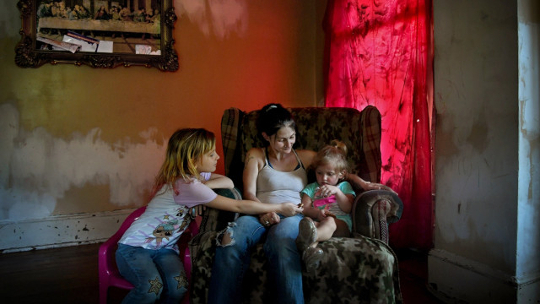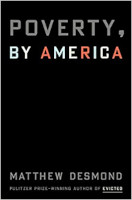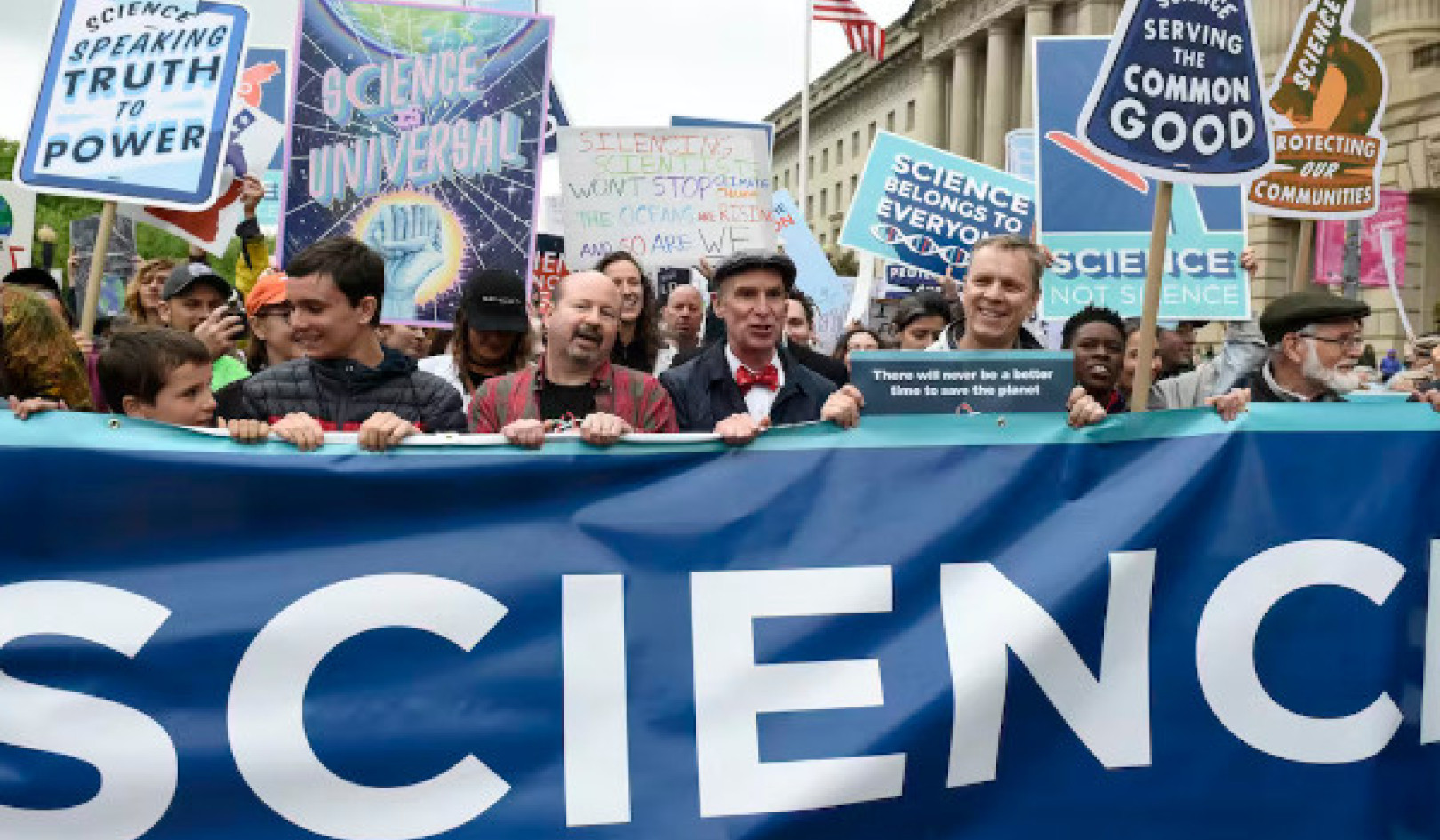
The United States, despite being one of the world's wealthiest nations, suffers from a high poverty rate compared to other advanced democracies. This issue is deeply rooted in the country's economic system, leading to significant income inequality and a concentration of wealth among a small percentage of the population. The low minimum wage exacerbates this situation, making it challenging for low-income workers to provide for themselves and their families. The lack of a comprehensive social welfare system and universal healthcare further complicates matters, leaving individuals without the necessary resources during difficult times.
Cultural factors also play a role in the prevalence of poverty in the US. The nation's history of individualism and self-reliance contributes to the stigma surrounding asking for help. At the same time, the perception that those struggling financially are at fault for their predicament obscures the systemic factors contributing to poverty. Additionally, the US experiences higher rates of racial and ethnic inequality than other developed countries, with people of color more likely to live in poverty due to discrimination in housing, employment, and education.
Addressing poverty in the United States requires a comprehensive understanding of the economic, social, and cultural factors contributing to this complex issue. Developing policies and interventions that target these root causes will be crucial in reducing poverty and promoting more significant economic equity and social justice for all Americans.
How The Poverty Dollars Get Consumed By Others
Poverty is a complex issue that demands a multi-faceted approach to resolve. A significant challenge in addressing poverty is the consumption of poverty dollars by government bureaucracy and the free market, rather than ensuring the funds reach those who most need them. Factors contributing to this challenge include bureaucracy, corruption, and inefficiency.
The government often faces bureaucratic hurdles that impede the distribution of poverty dollars to those in need. Extensive paperwork, strict eligibility criteria, and administrative costs can prevent funds from reaching struggling individuals. High prices driven by the profit motive and unethical practices like price gouging or market manipulation further exacerbate poverty, ensuring that even allocated funds fail to reach those in need. Meanwhile, the free market also contributes to the problem of consuming poverty dollars by providing essential services such as healthcare, housing, and food, often at an unaffordable cost.
To effectively combat poverty, it is crucial to address these challenges and ensure that poverty dollars are efficiently utilized to benefit those who need them most. This requires reducing bureaucratic obstacles, implementing more inclusive eligibility criteria, and promoting ethical practices within the private sector. A more effective and targeted approach to poverty alleviation can be achieved by tackling these issues.
Why Direct Payment Is The Best Method To Reduce Poverty
Direct payments, such as cash transfers, have emerged as an effective method for reducing poverty by providing people in need with the resources to meet their basic requirements and invest in their futures. This flexible approach can be tailored to recipients' specific needs, allowing them to decide how to spend the money based on their priorities and goals. Additionally, direct payments have a lower administrative burden than other poverty reduction programs, as they can be distributed through existing social safety nets or mobile payment systems with minimal overhead.
Although direct payments are not a cure-all for poverty, they have proven a powerful tool in helping individuals and families meet their basic needs and build a pathway out of poverty. Cash transfers produce benefits beyond poverty reduction, including improved health outcomes, increased school attendance, and economic growth stimulation. These positive effects create a virtuous cycle of poverty reduction and economic development. direct payments also reduce the stigma and embarrassment of having to go beg government officials for money, as well as mitigates the sense of personal failure that begging for a handout creates.
The United States holds the unenviable distinction of having the highest child poverty rate among developed nations, with 12.3 million children living in poverty in 2020. One of the most effective ways to address this issue is by providing financial assistance to families, such as through the Child Tax Credit (CTC). The expansion of the CTC in 2021 resulted in a significant reduction in child poverty, lifting 2.9 million children out of poverty and marking the most significant single-year decline on record.
The success of the expanded CTC demonstrates the power of financial assistance in combating child poverty. To ensure that all children have an opportunity to succeed, it is crucial to continue providing families with such support, ultimately creating a brighter future for a nation's youth.
We Now Know The Method To Eliminate Poverty
The United States faces significant challenges in addressing poverty, with economic, social, and cultural factors contributing to the high poverty rate. To effectively combat this issue, a comprehensive understanding of these factors is needed to develop targeted policies and interventions that promote economic equity and social justice for all Americans. Direct payments, such as cash transfers, have proven to be a powerful tool in reducing poverty, offering flexibility and lower administrative burdens than other poverty reduction programs.
The success of the expanded Child Tax Credit in reducing child poverty demonstrates the potential of financial assistance in alleviating poverty. However, ensuring that poverty dollars reach those who need them most requires addressing bureaucratic obstacles and promoting ethical practices within the private sector. A more effective and targeted poverty alleviation strategy can be achieved by tackling these challenges and adopting a multi-faceted approach, ultimately creating a brighter future for the nation's most vulnerable citizens.
About the Author
 Robert Jennings is co-publisher of InnerSelf.com with his wife Marie T Russell. He attended the University of Florida, Southern Technical Institute, and the University of Central Florida with studies in real estate, urban development, finance, architectural engineering, and elementary education. He was a member of the US Marine Corps and The US Army having commanded a field artillery battery in Germany. He worked in real estate finance, construction and development for 25 years before starting InnerSelf.com in 1996.
Robert Jennings is co-publisher of InnerSelf.com with his wife Marie T Russell. He attended the University of Florida, Southern Technical Institute, and the University of Central Florida with studies in real estate, urban development, finance, architectural engineering, and elementary education. He was a member of the US Marine Corps and The US Army having commanded a field artillery battery in Germany. He worked in real estate finance, construction and development for 25 years before starting InnerSelf.com in 1996.
InnerSelf is dedicated to sharing information that allows people to make educated and insightful choices in their personal life, for the good of the commons, and for the well-being of the planet. InnerSelf Magazine is in its 30+year of publication in either print (1984-1995) or online as InnerSelf.com. Please support our work.
Creative Commons 4.0
This article is licensed under a Creative Commons Attribution-Share Alike 4.0 License. Attribute the author Robert Jennings, InnerSelf.com. Link back to the article This article originally appeared on InnerSelf.com
Additional Information
The Privileged are Complicit in America’s Poverty Crisis
The United States -- the richest country in the world -- has a higher rate of poverty than any other advanced democracy. Pulitzer Prize-winning author Matthew Desmond examines the dire situation in his new book, and he joins Michel Martin to explain why the problem persists. Their conversation is part of Chasing the Dream, an ongoing initiative about poverty, jobs, and economic opportunity in America.
Mathew Desmond On America's Addiction To Poverty
According to the Center on Poverty and Social Policy at Columbia University, 14.3 percent of Americans — nearly 50 million people — were living in poverty in December. The scale of poverty in the U.S. dwarfs that of most of our peer countries. And it raises the question: Why does so much poverty persist in one of the richest countries in the world? For the Princeton sociologist Matthew Desmond, the answer is simple: Poverty is a policy choice. It persists because we allow it to. And we allow it to persist because so many of us — whether we realize it or not — benefit from the exploitation of the poor.
Related Book:
Poverty, by America
Written by Matthew Desmond. In this landmark book, acclaimed sociologist Matthew Desmond draws on history, research, and original reporting to show how affluent Americans knowingly and unknowingly keep poor people poor. Those of us who are financially secure exploit the poor, driving down their wages while forcing them to overpay for housing and access to cash and credit. We prioritize the subsidization of our wealth over the alleviation of poverty, designing a welfare state that gives the most to those who need the least. And we stockpile opportunity in exclusive communities, creating zones of concentrated riches alongside those of concentrated despair. Some lives are made small so that others may grow.
In this landmark book, acclaimed sociologist Matthew Desmond draws on history, research, and original reporting to show how affluent Americans knowingly and unknowingly keep poor people poor. Those of us who are financially secure exploit the poor, driving down their wages while forcing them to overpay for housing and access to cash and credit. We prioritize the subsidization of our wealth over the alleviation of poverty, designing a welfare state that gives the most to those who need the least. And we stockpile opportunity in exclusive communities, creating zones of concentrated riches alongside those of concentrated despair. Some lives are made small so that others may grow.
Elegantly written and fiercely argued, this compassionate book gives us new ways of thinking about a morally urgent problem. It also helps us imagine solutions. Matthew builds a startlingly original and ambitious case for ending poverty. He calls on us all to become poverty abolitionists, engaged in a politics of collective belonging to usher in a new age of shared prosperity and, at last, true freedom.
For more info or to order this book, use this link. Also available as a Kindle edition, and as an Audiobook.



























